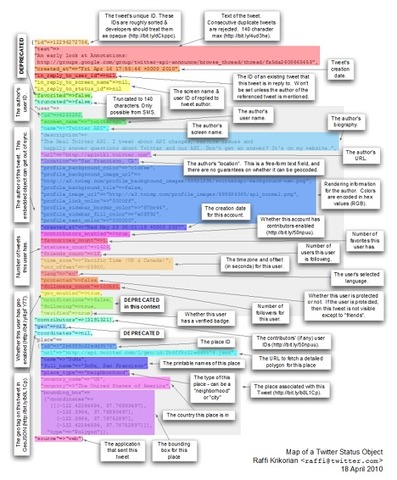Well, my recent University of San Francisco research paper “Applying Economic Concepts To Big Data To Determine The Financial Value Of The Organization’s Data And Analytics Research Paper” has fueled some very interesting conversations. Most excellent! That was one of its goals.
It is important for organizations to invest the time and effort to understand the economic value of their data because data has a direct impact on an organization’s financial investments and monetization capabilities. read moreSourced through Scoop.it from: bigdata.sys-con.com
[slides] Amazon’s #IoT Strategy | @ThingsExpo #M2M #AWS #ML #BigData https://t.co/FUiZK8jJCx
Sourced through Scoop.it from: bigdata.sys-con.com
Last year, researchers were able to fool a commercial facial recognition system into thinking they were someone else just by wearing a pair of patterned glasses. A sticker overlay with a hallucinogenic print was stuck onto the frames of the specs. The twists and curves of the pattern look random to humans, but to a […]
What if part of your job became teaching a computer everything you know about doing someone’s job — perhaps your own? Before the machines become smart enough to replace humans, as some people fear, the machines need teachers. Now, some companies are taking the first steps, deploying artificial intelligence in the workplace and asking their […]
In a paper posted to the arXiv preprint server this week, a team of computer scientists from the Renmin University of China in Beijing describes their system for fooling a computer trained to understand language. In short, by adding one very specific word to a particular part of a long sentence, or slightly misspelling one […]
How Does Machine Learning Work?Machine learning is often referred to as magical or a black box:Insert data > magic black box > mission accomplished.Let’s look at the training process itself to better understand how machine learning can create value with data.CollectMachine learning is dependent on data. The first step is to make sure you have […]
Programming used to be about translation: expressing ideas in natural language, working with them in math notation, then writing flowcharts and pseudocode, and finally writing a program. Translation was necessary because each language offers different capabilities. Natural language is expressive and readable, pseudocode is more precise, math notation is concise, and code is executable. Source: […]
This resource is designed primarily for beginning data scientists or analysts who are interested in identifying and applying machine learning algorithms to address the problems of their interest. A typical question asked by a beginner, when facing a wide variety of machine learning algorithms, is “which algorithm should I use?” Source: Which machine learning algorithm […]
If we go by the facts then every day 2.5 Quintillion Bytes of Data is created in the world. This data also has the repetitive and erroneous records which we need to remove before mining it for insights in it. Inaccurate Data leads to wrong assumptions and analysis ultimately leading to failure of the project. […]
In some broader sense, the epistemological notion of ground truth could apply to any machine-learning approach, if taken to mean the prior understanding of what sorts of patterns the algorithm is trained to search for. The truths being distilled from the data are those consistent with what domain experts—tutors—or quantitative experts—for example, statisticians, mathematicians, and […]






